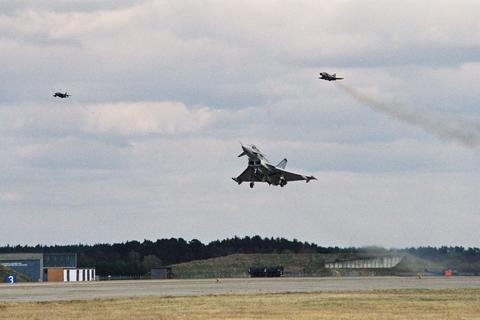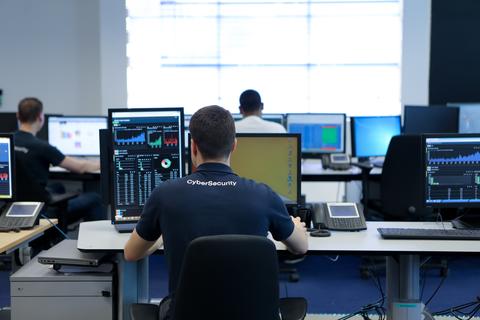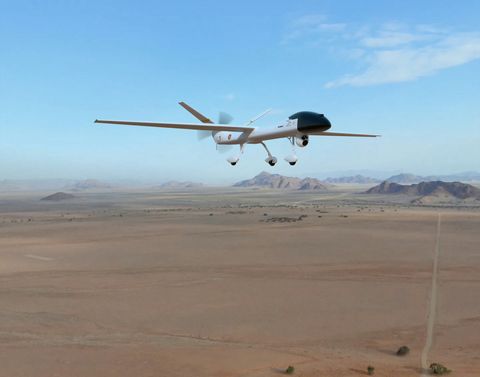Blue versus red: Europe wins
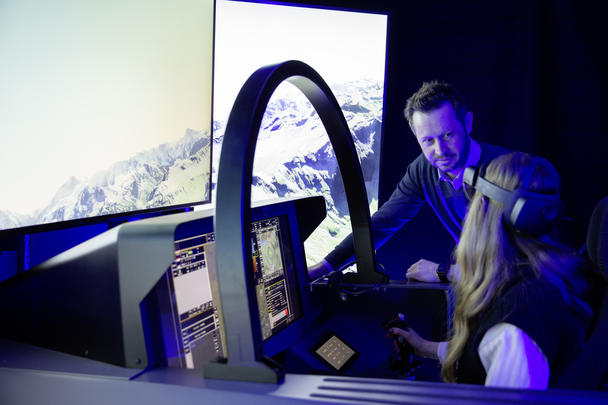
Across Europe, in France, Germany and Spain, Airbus and its partners are working at full speed to ensure that the Future Combat Air System (FCAS) will be operational by 2040.
Karl climbs into his cockpit. His mission today: to assess new functionalities and technologies for use in a next generation fighter jet. These include: a touchscreen human-machine interface that allows him to assign tasks to a swarm of drones, or remote carriers as they are known in the military, and an augmented reality system that displays information such as reconnaissance and other mission participant’s data as well as the status of the remote carriers - all of which his jet is connected to via a data cloud called the ‘Combat Cloud’.
What sounds like science fiction today will be reality in 2040. This is because such technologies will be flying in the Future Combat Air System, or FCAS for short, which will by then be operational in France, Germany and Spain and will gradually replace existing combat aircraft such as the Eurofighter or the Rafale. FCAS will be centred around a core Next Generation Weapon System (NGWS). In this ‘system of systems’, a New Generation Fighter (NGF) will work together with remote carriers (RC) and be connected to other systems in space, in the air, on the ground, at sea and in cyberspace via a data link and mission service cloud.
Karl, a former German Air Force weapon system officer, is part of a Franco-German-Spanish team at Airbus testing how it all works at the company's FCAS Prototyping Laboratory (FPL) in Manching, near Munich. Karl is not actually sitting in a real jet, but flying virtual missions in a simulator. “We research and work on solutions that don’t exist yet, but will be required in the future,” Karl explains. “Through these virtual missions, we gain ‘hands-on experience’ that helps us refine and assess new technologies and concepts as well as identify their technical, operational and integrational readiness,” adds Johannes Horn, Chief Engineer FCAS Simulation and Virtualization. “This eventually allows us to integrate the best solutions into the design and development of FCAS."
Five years to the demonstrator's first flight
The clock is ticking, and Demonstrator Phase 1B is now in full swing: by 2025 the FCAS flight demonstrators will have been further developed. Demo Phase 2 will then see them take off for the first time: the remote carrier demonstrator in 2028 and the New Generation Fighter demonstrator in 2029. The production phase is scheduled to begin in the 2030s.
Including the FPL team, Airbus currently has 250 people working on the FCAS and plans to have 800 doing so by the end of 2023. “We want to fill the new positions with both internal and external candidates,” says Bruno Fichefeux, head of FCAS programme at Airbus, adding that 80 per cent of them will work in Engineering. Working on FCAS is rewarding, both for experienced and new talents, says Fichefeux: "After all, it’s not too often that you get the opportunity to work on the most important European defence project of the next decades.”
On the Airbus side, this will take place mainly in four plateaus or integrated work areas: in Manching, with a focus on the New Generation Fighter, Remote Carriers and stealth technologies; in Getafe near Madrid, where work is being done on the New Generation Fighter and stealth technologies; in Friedrichshafen on Lake Constance, where work is being done on the combat cloud and remote carriers; and in Elancourt near Paris, where teams are working on the overall system of systems and the combat cloud.
But how is collaboration with external partners set up? In the Phase 1B demonstration, it is divided into individual pillars (see infographic), each of which has a leading company with partners, according to the "best athlete" principle. Airbus, for example, is responsible for the remote carriers, combat cloud and stealth technologies. There will also be a plateau in Saint-Cloud, France, where Dassault Aviation will notably lead the New Generation Fighter pillar together with Airbus as a main partner.
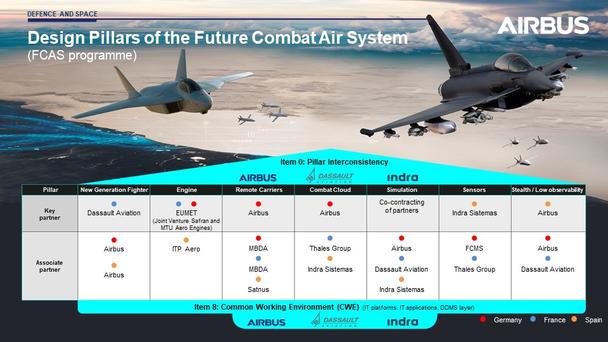
In the FCAS Demonstrator Phase 1B, roles and responsibilities are clearly defined: For each pillar, there is a leader, a so-called ‘prime’, and ‘main partners’ who are involved in the developments. Airbus, for example, is responsible for the remote carriers, combat cloud and stealth technologies.
Europe gains autonomy
"As a European player in aerospace, collaboration is our daily business," Fichefeux says. After all, Airbus was founded on the very idea of working together to achieve what is impossible alone. "Of course," says Fichefeux, "cooperation is not always easy, but ultimately, we strive with our partners to achieve a common goal: to provide our customers with the best possible equipment to fulfil their military missions to protect and defend our democracies.”
But why does Europe need its own system to do this, why not just buy an existing one off the shelf, for example in the United States? “Firstly, there is no system yet that meets all the requirements,” Fichefeux explains. Second, he says, it’s about nothing less than European autonomy: "Our air forces need to be able to operate where and when they think it’s strategically important, without black boxes in between. Not having that capability would be a tremendous loss of sovereignty."
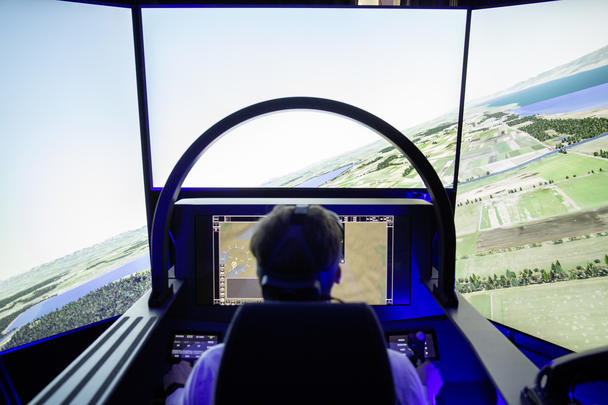
The FCAS Lab team uses simulators to fly virtual missions. The aim is to research and work on solutions that don't exist today, but will be needed in the future.
Working on the requirements of the future
Back at the FPL, in their touchscreen simulators with virtual head-up display cockpits, Karl and his colleagues are about to take out an enemy’s ground based air defence system supported by unmanned assets and smart algorithms. They are not flying the mission alone, but in a team with colleagues in other simulators at the FCAS Lab and at Airbus’ Spanish site in Getafe near Madrid, all networked together.
Blue (allies) versus red (threat) is the name of these exercises, which are designed to clarify the requirements that the future air combat system will have to meet. Conducting these exercises is no easy feat. They involve virtual cockpits built by Airbus Human Factors Engineering experts based on decades of experience (for further information, click on the video below). Added to that are virtual hostile forces challenging every carefully prepared mission plan, the simulation operators who closely evaluate whether their simulations behave correctly, and other experts who closely monitor the performance of their sub-systems and data to further mature their operational value and readiness. “Each exercise generates new ideas, matures concepts and provides hands-on experience of what a future digital engineering process might look like to maximise the system”, explains Johannes Horn.
Meanwhile, Karl and his colleagues at the FCAS Lab in Manching are carrying out their mission with aplomb. This time, Blue is winning, not least because in the simulation FCAS already has everything that it needs: plenty of speed, an extensive sensor grid and the collaborative firepower of all the networked systems involved.
Video: Exclusive look inside the FCAS Prototyping Lab
